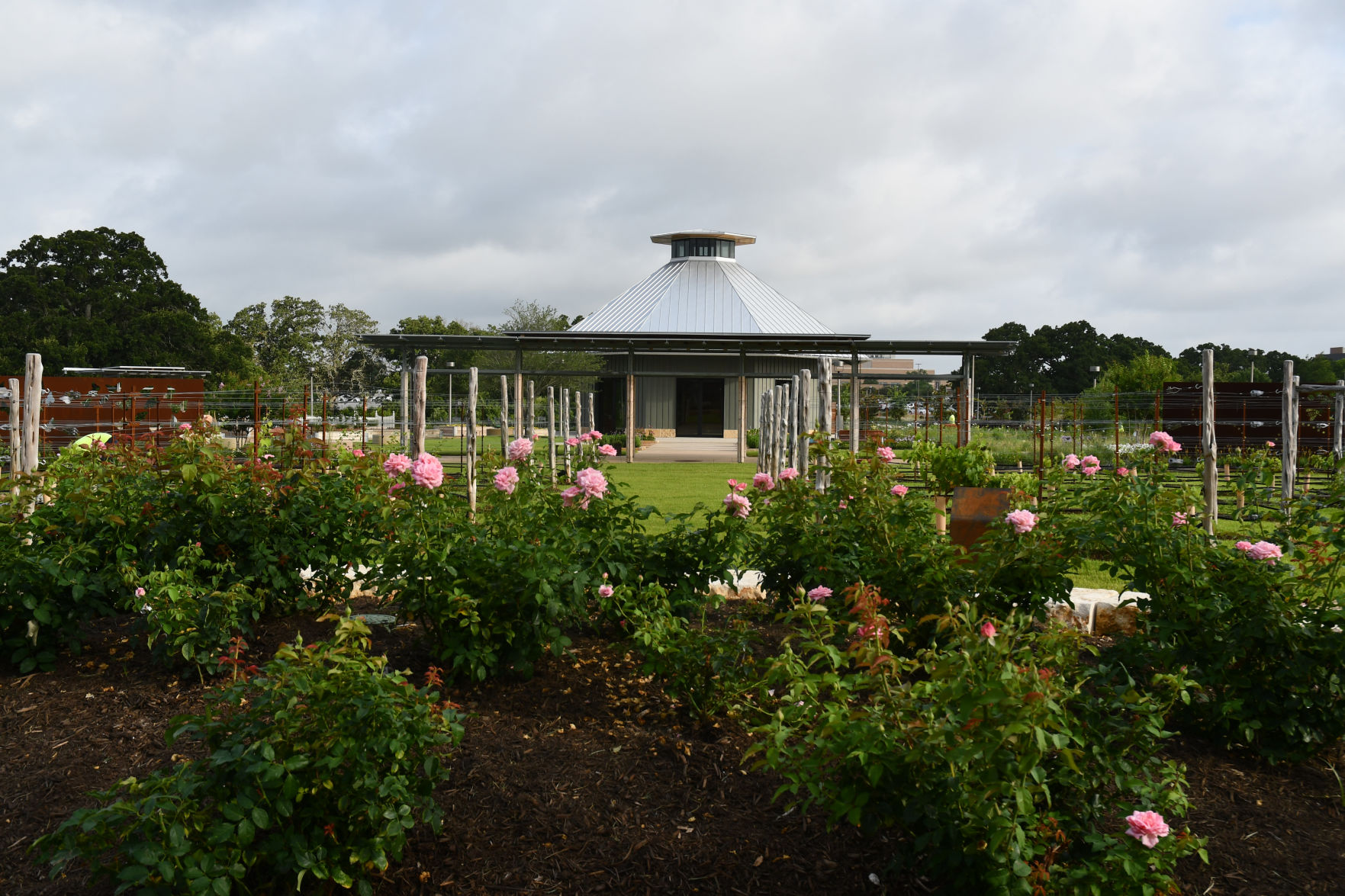The Leach Teaching Gardens at Texas A&M University makes its debut

The Leach Teaching Gardens at Texas A&M University, a multi-million-dollar centerpiece on west campus in College Station, debuted with a ribbon cutting and grand opening ceremony.
Phase I, The Leach Teaching Garden, is named for donors Tim and Amy Leach of Midland.
“Amy and I knew that the Gardens at Texas A&M would be a transformational project the first time Doug Welsh, professor and AgriLife Extension horticulturist emeritus, described it to us,” said Tim Leach. “We are delighted to support The Gardens project and believe it sets the standard for green space across campus.”
Texas A&M University System Chancellor John Sharp said, “Thanks to the generous gift from Amy and Tim Leach, the true beauty of Texas A&M is showcased in the magnificent collection of flowers, vegetables and gardens available for everyone throughout Aggieland, Texas and nationally to experience.”
The Gardens include a variety of themed spaces for teaching, research and community involvement and enjoyment. The 40-acre complex includes a pavilion and thematic installations such as a rain garden, food and fiber field, vegetable beds, Earth-Kind planting and more.
“The Gardens at Texas A&M is truly a unique experience,” said Patrick Stover, vice chancellor for agriculture and life sciences at Texas A&M. “This living classroom is educational, inspirational and recreational for all individuals to appreciate and enjoy.”
“What a welcoming and comfortable place for Aggies and local community members to come and enjoy the beauty of nature,” said Texas A&M University President Michael K. Young. “Apropos of our land-grant history, this wonderful project will not only enhance green space on our campus, it will provide educational and research opportunities about food production, landscape management and the environment for our faculty, students and the public for generations to come.”
At least 25 years ago, the Texas A&M University System’s board of regents designated the area along White Creek a greenbelt, meaning that no permanent construction could be built there. When the College of Agriculture and Life Sciences, Texas A&M AgriLife Research and the Texas A&M AgriLife Extension Service relocated to the land south of White Creek, the concept of an extended garden began to take shape.
Faculty and students from other colleges and a of group of landscape architect graduate students in the College of Architecture devised the larger plan for 27 acres, which was then overseen by Welsh, also a former horticulture department associate head.
The Gardens features a Mexican Heritage Garden, with native plants found in Mexico and a hand-carved stone fountain; the Leach Vineyard with a comprehensive viticulture exhibit; a pavilion for indoor classroom educational activities; and the Food and Fiber Fields quadrant, featuring a center-pivot irrigation system.
“The 21 themed garden rooms and 250-plus species and varieties of plants, flowers, trees and shrubs really make this garden the premier spot for teaching, research and outreach,” said Joseph Johnson, gardens manager. “Also, the many structures and features exhibit Texas’ culture rich vernacular. We are so excited that the Leach Teaching Gardens are ready to welcome everyone to this Aggieland showcase.”
The Gardens feature more than 300 trees including eight pecan, eight citrus, 19 fruit trees and more than 143 ornamentals. There are also numerous annuals, herbs, vegetable and agronomy crops.
Future phases include outdoor venues for performing arts, films, celebrations and social events. Other planned gardens include for children, a rose garden and feed-the-world themed courtyard.
Overall, The Gardens is a place to learn and relax for students but also for residents and visitors to Bryan-College Station.
“This will be viewed as a source of pride not only for us at Texas A&M, but for the community,” Stover said.
For more information about The Gardens at Texas A&M, go to http://gardens.tamu.edu.

